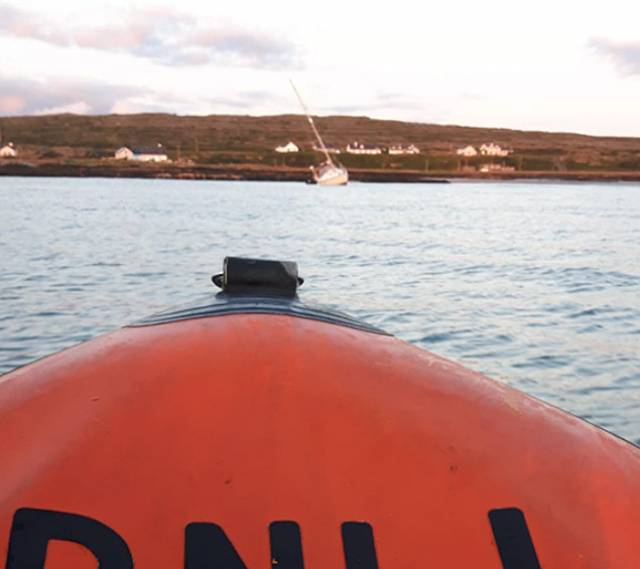Aran Islands RNLI responded to two call-outs last night and early this morning to carry out a medical evacuation and come to the aid of a lone sailor.
The volunteer crew was first asked to launch their all-weather lifeboat at 11 pm on Monday night following a request from the Irish Coast Guard to transport a patient under medical advice to Rossaveal Harbour and on to a waiting ambulance.
The lifeboat under Coxswain John O’Donnell and with six crew members onboard, launched immediately and made their way to the scene to carry out the medical evacuation. Weather conditions at the time were good with calm waters.
Later in the early hours of this morning, the volunteer crew was requested to launch their lifeboat at 4.50am by the Irish Coast Guard following a report that a 38ft yacht with one sailor onboard had run aground in Kilronan Harbour after it's mooring line broke.
The lifeboat under Coxswain John O'Donnell launched once again and went to the aid of the yacht. Weather conditions at this time were good with calm seas.
Once on scene, the crew proceeded to launch the lifeboat’s small inflatable daughter boat which is used in rescues to access areas near rocks and shallow waters. The three crew members onboard this y-boat made their way to the stranded yacht where two crew members then boarded the yacht and first assessed that the sailor was safe and well before assisting him with the incoming tide to free his yacht from her grounding.
Speaking following the call out, Lena O’Connell, Aran Islands RNLI Lifeboat Press Officer said: ‘While our volunteers are always prepared for the pager to go off at any time, it is unusual to get back to back call outs in quick succession during the night. We would like to wish both the patient who required a medical evacuation off the island and the lone sailor all the best'.































































